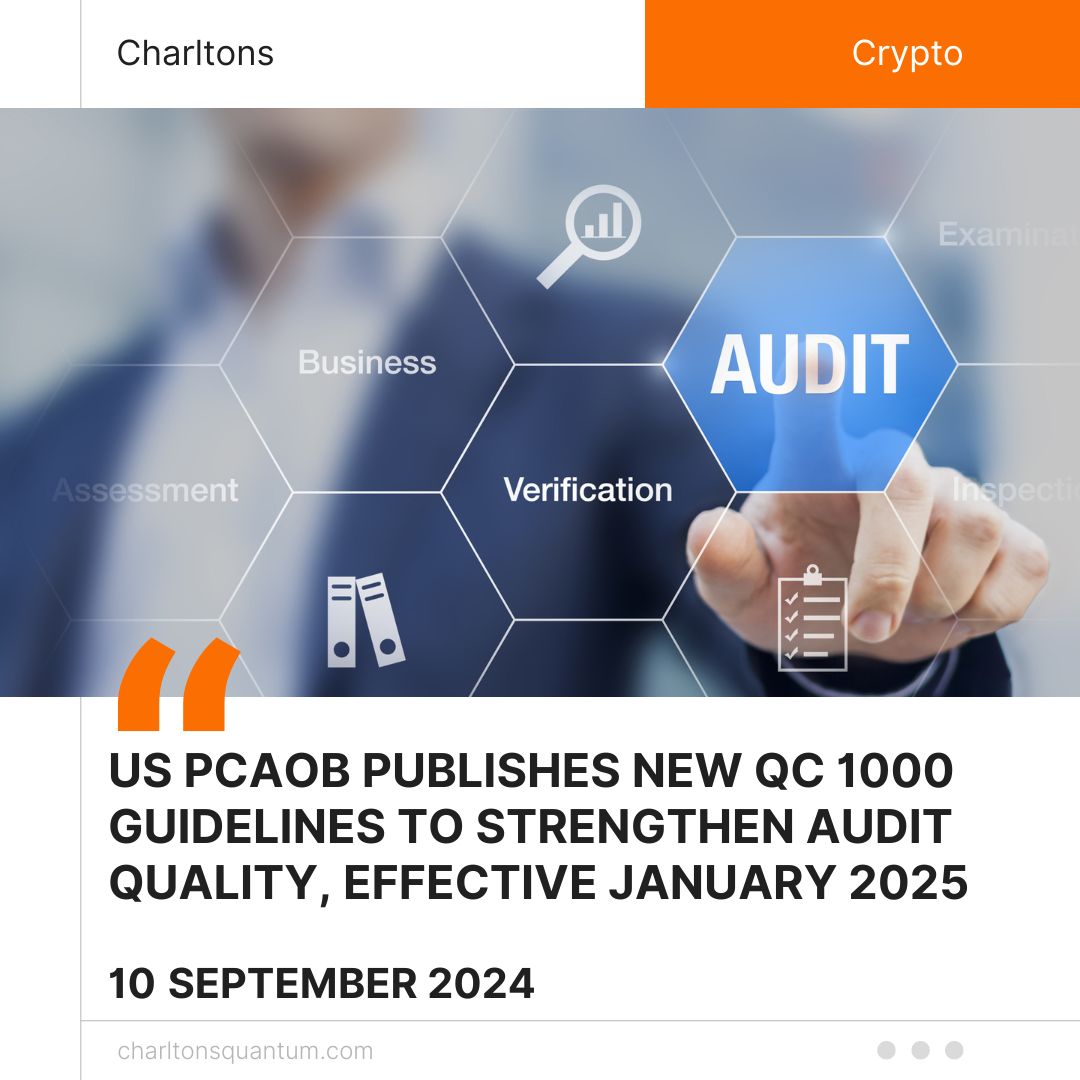
On September 9, 2024, the United States’ Public Company Accounting Oversight Board (PCAOB), with the approval of the United States Securities and Exchange Commission (US SEC), published the QC 1000 guidelines, to enhance quality control standards for public accounting firms. These guidelines aim to strengthen audit practices by implementing a risk-based, integrated framework that governs key operational areas such as governance, ethics, engagement performance, and monitoring. The QC 1000 guidelines are set to be implemented starting January 1, 2025, allowing firms time to align their systems with the new standards. The guidelines is expected to enhance the quality, reliability, and transparency of audit reports, thereby reinforcing investor confidence and ensuring the integrity of financial reporting across the market.
The QC 1000 standard introduces an integrated framework that consists of six key components which firms must adhere to in their quality control systems. These components encompass critical areas such as governance and leadership, ethics and independence, engagement performance, human resources, technological resources, and firm monitoring. The QC 1000 system incorporates two process components, specifically a risk assessment process and a monitoring and remediation process, which serve to continuously evaluate the firm’s operational effectiveness and address any identified deficiencies.
Under governance and leadership, firms must establish a strong structure that promotes a culture of quality. Leadership is responsible for ensuring that the firm’s strategic direction prioritises audit quality and ethical behaviour. Leaders are expected to allocate resources appropriately and ensure that quality control systems are consistently developed and maintained. Clear roles and accountability for those overseeing quality control are essential.
In terms of ethics and independence, firms must adopt policies that ensure they remain independent from clients and prevent conflicts of interest. Regular assessments of independence are required, and professionals must receive ongoing training to maintain ethical standards. Compliance with both regulatory and firm-imposed guidelines related to confidentiality, objectivity, and client treatment is mandatory.
For engagement performance, firms must ensure that all audit work adheres to established standards, with thorough evidence collection and proper assignment of skilled professionals. Regular reviews during key stages of the audit process are required to identify risks and take corrective action. Complex or high-risk engagements may necessitate additional oversight to maintain quality.
The human resources requirements focus on hiring, training, and developing staff capable of performing high-quality audits. Firms must uphold rigorous hiring standards and offer ongoing professional development to keep staff updated on industry standards and risks. Performance evaluation and compensation systems must reward quality and ethical behaviour, with processes in place to address underperformance.
In technological resources, firms are required to use up-to-date technology that supports audit execution and ensures security. Staff must be properly trained in the use of these tools, and firms must regularly assess the reliability and security of their technology infrastructure. Procedures for evaluating emerging technologies and their impact on audit quality are also essential.
Firm monitoring requires a continuous self-assessment process to evaluate the effectiveness of quality control systems. Firms must conduct regular internal reviews to address deficiencies, perform an annual evaluation of their systems, and report results to the PCAOB. Firms serving more than 100 issuers are also required to establish an external quality control function to ensure independent review of their systems.
The risk assessment process requires firms to continuously evaluate potential risks that may impact the quality of their audit engagements. This process involves identifying, analysing, and addressing risks related to both the firm’s operations and its individual audit engagements. Firms are expected to develop policies and procedures that allow them to proactively detect risks and implement strategies to mitigate them.
The monitoring and remediation process as an ongoing obligation requires firms to regularly monitor their quality control systems to ensure they are functioning as intended. Through continuous oversight, firms are required to identify deficiencies or weaknesses within their audit practices. Once issues are detected, firms must take corrective actions to remedy the problems and prevent their recurrence. Regular reporting on the results of this process is essential to maintain transparency and accountability.
In addition to these structural reforms, the monitoring and remediation process embedded in QC 1000 requires firms to conduct ongoing oversight of their audit engagements. Public accounting firms are obligated to detect and remedy deficiencies within their quality control systems and take timely corrective measures to ensure compliance with the regulatory framework.
Under the QC 1000 system, public accounting firms are required to conduct an annual evaluation of their quality control systems and submit a report detailing the outcomes of this evaluation to the PCAOB. The annual reporting mechanism introduces an additional layer of accountability, to ensure that firms maintain the highest standards of audit quality throughout the year. Firms that issue audit reports for more than 100 issuers are subject to stricter requirements to adopt an external quality control function (EQCF). This EQCF serves as an independent body that ensures quality control systems are adhered to and that the firm consistently meets its obligations under the PCAOB standards.
The US SEC’s approval of QC 1000 followed an extensive public comment period, during which the proposal received consultation. Several stakeholders voiced their concerns regarding the increased operational costs and administrative burdens that smaller audit firms may face under the new framework. Despite these concerns, the US SEC concluded that the QC 1000 system would significantly enhance audit quality, improve the reliability of financial reporting, and bolster investor confidence.
(Source: https://www.sec.gov/files/rules/pcaob/2024/34-100968.pdf, https://www.sec.gov/newsroom/press-releases/2024-119)





